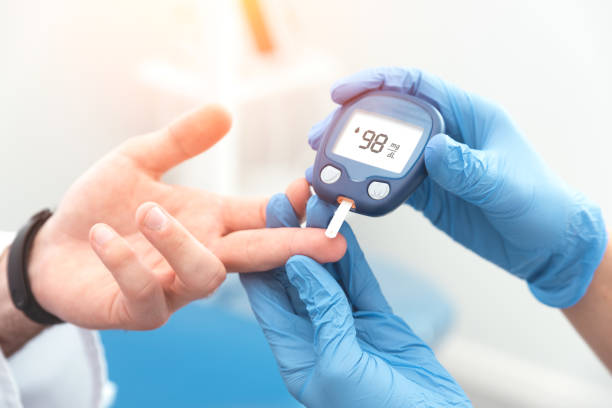Nursing Care Plan For Fever
In this article, we will discuss the meaning of Fever and hyperthermia, The nursing care plan for Fever, the nursing assessment, and interventions
Fever is a state of Hyperthermia. It is defined as an abnormally high body temperature caused by a disturbance in body temperature regulation, which occurs when the body creates or absorbs more heat than it releases. It is defined as a prolonged core temperature higher than the normal range, generally greater than 39 °C (102.2 °F). Body temperatures exceeding 40 °C (104 °F) can be life-threatening.
Read Also: How to work as a Nurse in New Zealand
Is there a difference between Fever and Hyperthermia?
Hyperthermia is defined as an uncontrolled rise in body temperature that exceeds the body’s ability to lose heat due to hypothalamic thermoregulation failure. In contrast, Fever (pyrexia) is defined as a brief increase in body temperature above normal that is caused by cytokine activation (e.g., immunological activity owing to infection, inflammatory illnesses) and is controlled by the hypothalamus.
Causes of Fever (pyrexia
The following are common factors that cause Fevers
- Dehydration
- Reaction to medication
- Pathogen infection
- Long-term exposure to a hot environment
- Elevated metabolic activity

Signs and symptoms of Fever
The following signs and symptoms are associated with hyperthermia:
- Body temperature that is higher than typical
- Skin flushed and hot
- accelerated heart rate
- accelerated respiratory rate
- Appetite loss
- Illness or weakness
- Seizures
Nursing Care Plan for Fever
The NANDA Nursing diagnosis for Fever is – hyperthermia related to infection/disease condition, evidenced by a temperature reading of 39°C ( and above)
Nursing assessment and rationale for fever
Assessment is required to identify probable conditions that may have contributed to hyperthermia and to identify any events that happened during nursing care.
CHECK THIS: WORKING as a NURSE In USA
- 𝐂𝐡𝐞𝐜𝐤 𝐟𝐨𝐫 𝐭𝐡𝐞 𝐬𝐲𝐦𝐩𝐭𝐨𝐦𝐬 𝐨𝐟 𝐡𝐲𝐩𝐞𝐫𝐭𝐠𝐞𝐫𝐦𝐢𝐚- assess for a flushed, red face, abnormal breathing patterns, tachycardia, lethargy, headache, and irritability. Keep an eye out for reports of excessive sweating, hot and dry skin, or being overheated.
- Examine for indications of dehydration caused by heat.- Dehydration symptoms include thirst, a wrinkled tongue, dry lips, dry oral membranes, low skin turgor, reduced urine production, elevated urine concentration, and a weak, rapid pulse.
- Measure and document the client’s temperature accurately every hour or as often as suggested, or if there is a change in the client’s health.-The use of a consistent temperature monitoring technique, site, and equipment will aid in making correct treatment decisions and assessing temperature trends. If required, use two temperature monitoring modes.
- Observe fluid consumption and urine output-To rectify dehydration, fluid resuscitation may be necessary.
Nursing intervention and rationale for Fever
The therapeutic nursing interventions for hyperthermia are as follows:
- Remove or adjust extra clothing and blankets– Skin exposure to room air reduces heat and enhances evaporative cooling.
- When cooling blankets are required, provide them.-When the body temperature has to be reduced fast, and use cooling blankets that circulate water. To prevent shivering, set the temperature regulator to 1oC lower than the client’s current temperature.
- Give a tepid bath or sponge bath– A tepid sponge bath is a non-pharmacological method of allowing evaporative cooling to occur
- Adjust and monitor environmental elements such as room temperature and bed sheets- opening the windows in a means to promote cross ventilation and heat reduction by convection.
- Begin with intravenous normal saline solutions or as directed– During shivering chills, intravenous normal saline solution restores fluid losses. It also helps to alleviate dehydration.
- Administer medication as prescribed– medications like analgesics are used to reduce Fever and return the body to a normal temperature. diazepam (Valium) or chlorpromazine (Thorazine) Aids in the prevention of excessive shivering, which raises heat generation, oxygen uptake, and cardiorespiratory labor
Understand that antipyretic drugs are ineffective in treating hyperthermia.
Antipyretic drugs (such as acetaminophen, aspirin, and NSAIDs) play no function in the treatment of heat sickness or heat stroke. Antipyretics are not expected to function on a healthy hypothalamus that has been overworked because they block the shift in the hypothalamic set point produced by pyrogens.
Interventions in patient education and home care
Some of the interventions mentioned above can be modified for use in-home care.
Health education for the patient and family assists in managing illness symptoms and may help avoid additional hyperthermia consequences.
- Ask patient or relatives if they own a thermometer at home
- Educate the client on the signs and symptoms of Fever and how to identify the cause
- Advise the client to monitor their temperature when engaging in outdoor activities
- Emphasize the importance of reporting persistently elevated temperatures, especially among the elderly, who may not present with Fever when infected.
With the utilization of the Nursing care plan, a client can benefit from nursing intervention and health education to decrease Fever and hyperthermia, enhance health, and overall well-being.






